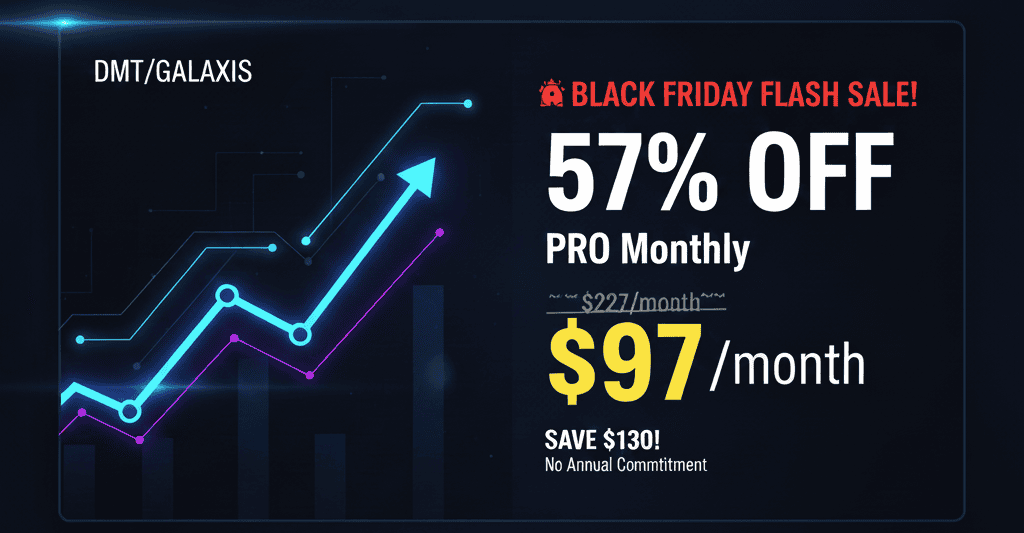Turning Competitor Data Into Strategy With AI
AI competitor analysis converts raw market information into clear, actionable strategy. Instead of reacting to rivals after they move, you predict their direction using continuous data, pattern recognition, and automated reporting. The result is a system that monitors your entire competitive landscape in real time and highlights the exact levers—content, product, or pricing—you can adjust for advantage.
This guide breaks down how to design that system, interpret the data it produces, and connect insights directly to strategic planning.
Understand the modern competitive landscape
Competition no longer means tracking just one or two rivals. In digital ecosystems, every algorithm update, ad campaign, or product launch shifts the landscape. AI competitor analysis gives you visibility across all of it—search rankings, ad spend, content engagement, and sentiment—without manual effort.
- Identify market players. Go beyond direct rivals. Include substitute solutions and emerging entrants who disrupt through new technology or pricing.
- Collect performance metrics. Platforms like SEMrush Competitor Analysis Tool and Ahrefs reveal traffic distribution, backlink quality, and keyword overlap.
- Track content and engagement. Use Crayon Competitive Intelligence Platform or BuzzSumo to analyze posting frequency, engagement spikes, and viral themes.
- Study product and feature velocity. AI systems monitor update patterns to spot innovation trends or resource shifts inside competitors’ teams.
You gain not only snapshots but also movement—who’s growing, who’s retreating, and why.
Build an AI-driven model for strategic positioning
Once the data pipeline is stable, use AI to compare your performance signals against competitors. The aim is to find gaps and correlations that manual benchmarking would miss.
- Automated SWOT analysis. Feed performance indicators into algorithms that score your strengths, weaknesses, opportunities, and threats based on quantitative evidence.
- Sentiment and share-of-voice mapping. NLP models scan social and news data to determine how often competitors are mentioned and in what tone.
- Predictive opportunity modeling. Machine learning identifies under-served niches where your authority could grow fastest—ideal for campaign planning.
- Strategic message alignment. Correlate competitor positioning statements with audience responses to refine your brand language.
This process replaces subjective intuition with measurable intelligence.
Automate data collection for always-on intelligence
Manual reports go stale fast. Automated rival assessment keeps your dashboard current and your planning relevant.
- Select your toolset. Combine enterprise options like IBM Watson Analytics for large-scale data integration with lightweight workflow tools such as n8n for automation.
- Define parameters. Choose measurable KPIs—organic visibility, ad share, domain authority, or content velocity.
- Schedule crawls and triggers. Use machine learning pipelines to refresh datasets daily or weekly, flagging anomalies immediately.
- Integrate alerts. Link notifications to Slack or project management systems so marketing and strategy teams act on insights without delay.
Continuous monitoring ensures that strategic decisions always reflect real market conditions rather than outdated reports.
Transform analytics into market advantage
The goal is not more data—it’s better timing. Strategic planning with AI means translating metrics into moves that create separation between your brand and competitors.
- Anticipate reactions. Forecast how competitors might respond to your campaigns based on historical behavior models.
- Optimize resource allocation. Shift budget toward channels where data shows rivals underperforming.
- Detect partnerships and acquisitions early. AI pattern analysis often reveals collaboration trends before public announcements.
- Adapt messaging faster. Track changes in audience sentiment to reposition before competitors do.
Each improvement compounds. Over months, predictive awareness turns into measurable market share gains.
Benchmark performance with precision
Benchmarking is where insight becomes accountability. AI tools evaluate not just what competitors are doing, but how efficiently they do it.
- Content efficiency scores. Measure output versus engagement rate to determine who converts the least content into the most traffic.
- Cost-per-impact ratios. Estimate visibility relative to advertising spend using data fusion between SEO and PPC metrics.
- Technology adoption trends. Monitor AI, automation, or analytics tools mentioned in competitor job listings or case studies.
- Performance trajectory modeling. Predict whether rivals’ growth rates are sustainable or plateauing.
These models create early-warning indicators, letting you adjust tactics months before traditional reporting would reveal the same insight.
Checklist for effective AI competitor analysis
- [ ] Identify direct, indirect, and emerging competitors.
- [ ] Integrate multiple AI data sources (SEMrush, Ahrefs, Crayon, IBM Watson).
- [ ] Automate collection of key metrics: traffic, backlinks, content output, sentiment.
- [ ] Conduct automated SWOT and predictive opportunity modeling.
- [ ] Establish real-time dashboards and alerts for anomaly detection.
- [ ] Benchmark performance quarterly against evolving KPIs.
- [ ] Feed insights into campaign planning and messaging strategy.
Following this structure ensures your analysis evolves alongside market shifts.
FAQ
How does AI improve competitor analysis compared to traditional methods?
AI analyzes thousands of data points simultaneously—keywords, ads, backlinks, pricing, sentiment—to reveal trends that manual research misses. It reduces bias and accelerates decision cycles.
Which tools are best for automated rival assessment?
Use SEMrush for SEO visibility, Ahrefs for backlink intelligence, Crayon for content tracking, and IBM Watson Analytics for large-scale data modeling.
Can small businesses benefit from AI competitor analysis?
Yes. Scalable tools let even small teams automate monitoring at low cost, focusing on niche competitors rather than enterprise giants.
How often should competitive data be updated?
Ideally weekly. Markets shift fast, and AI automation enables continuous updates without manual labor.
What outcomes indicate success?
Improved conversion rates, higher share of organic traffic, faster campaign response times, and better forecasting accuracy.
